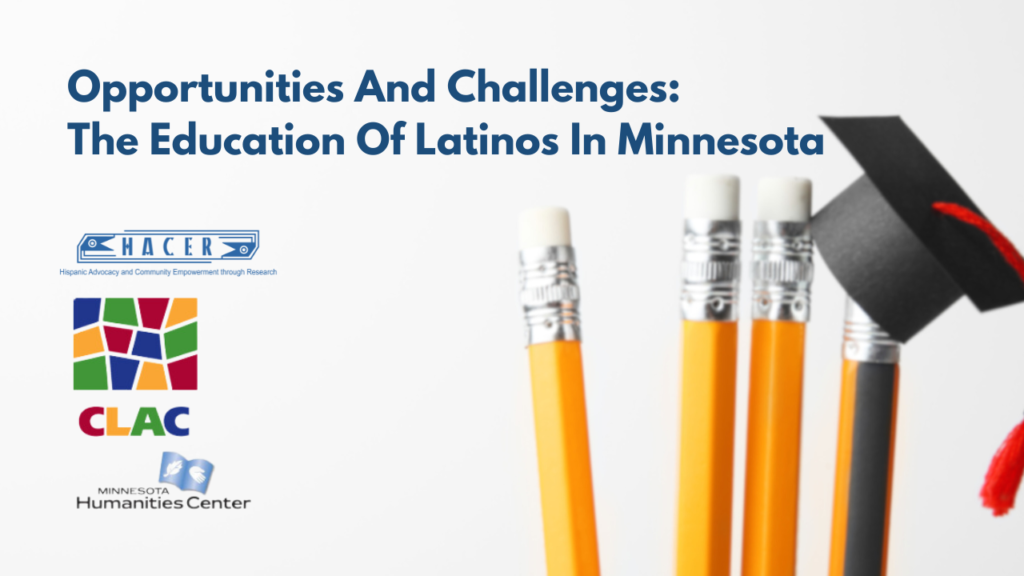
This report presents the results of research into factors that contribute to successful educational outcomes for Latino students in Minnesota high schools. The Chicano-Latino Affairs Council (CLAC) and the Minnesota Humanities Center (MHC) partnered with Hispanic Advocacy and Community Empowerment through Research (HACER) as part of a larger initiative to more successfully leverage the potential of Minnesota’s Latino students to contribute to the state’s overall economy and wellbeing. This initiative is based on data showing that Minnesota’s rapidly growing Latino population is poised to support the state’s future success in a globalized economy if we tap into the intercultural knowledge and language skills that have been historically underutilized. Central to this initiative is the goal of improving high school graduation rates, lowering dropout rates, and expanding college enrollment of Latino youth, thereby allowing them to develop the skills required in today’s workforce.
This research focused on high schools across Minnesota whose programs have produced aboveaverage success rates for Latino students and in which educational disparities among students have been narrowed. The team reviewed scholarly research and demographic data, and examined the factors that contribute to lower educational attainment for Latino students comparing them to other programs throughout the country that have been correlated with high levels of success for Latino students, as well as scholarly literature related to this topic. Specific high schools chosen as research sites were selected based on a) total Latino student population, b) the desire to have a diverse set of geographies represented (rural/suburban/urban), c) indicators of success (including graduation rates and student achievement data), and d) additional relevant factors such as exemplary enrichment programs.
The research project included the following activities:
- Literature Review: Review of quantitative data, best practices, and existing research on the achievement gap and successful educational programs, schools, and program elements.
- Examination of 6 successful secondary schools and education programs throughout Minnesota. This research included:
- Review of educational data in each of the schools;
- Background research on school programs and community-level socioeconomic factors;
- Individual interviews with program leaders, staff, and successful students from these schools.
